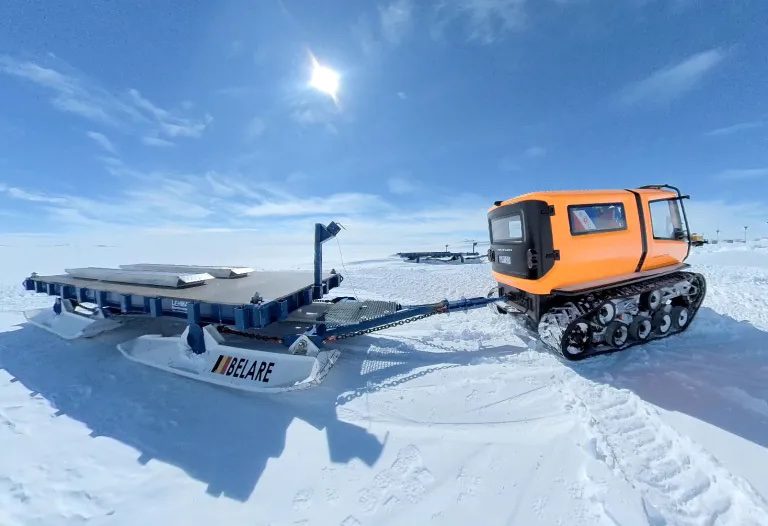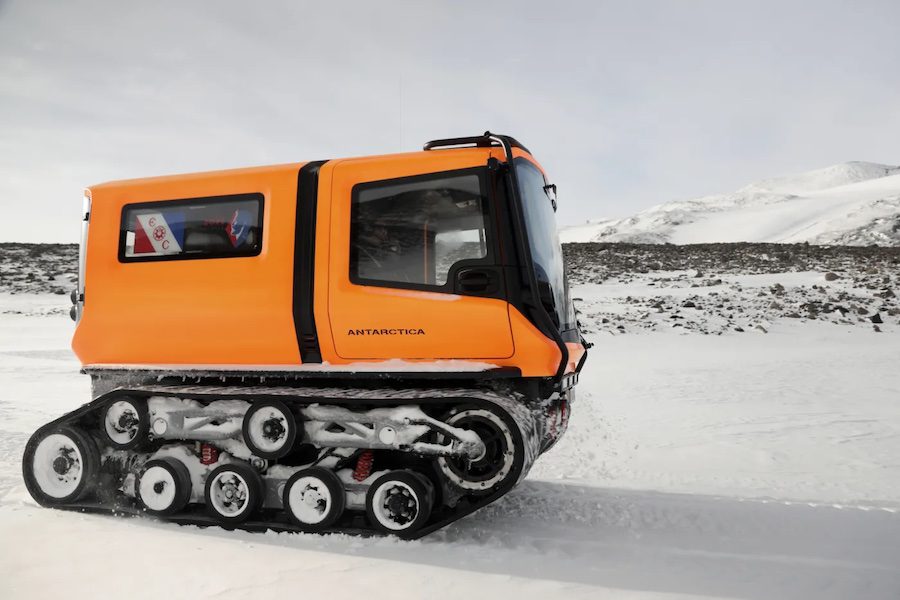Venturi, the Monaco-based electric vehicle manufacturer, has delivered the first electric polar exploration vehicle to its destination at the Princess Elisabeth Antarctica Station, giving teams a completely eco-friendly mode of transport to carry out their missions.
The South Pole is an unforgiving destination. With average winter temperatures of -60ºC, it is not a place to leave things to chance. So, when Monaco-based electric vehicle maker Venturi set about building a mode of transportation for the Princess Elisabeth Antarctica Station, it had to be made to withstand these frigid conditions, thinking not only of the practicalities involved, but also of the environment.
The result was the Venturi Antarctica, the first electric vehicle with caterpillar tracks made to conquer the harsh climate whilst keeping with the stations zero emissions policy.
“Almost 12 years ago to the day, H.S.H. Prince Albert II of Monaco returned from a trip to Antarctica and told me that the scientific research stations did not have clean vehicles,” says Gildo Pastor, President of Venturi. “Through the Prince Albert II Foundation, Venturi was then entrusted with the task of providing a zero-emission solution that would enable access to areas of scientific study.”
The finished vehicle was presented to Prince Albert II on World Environment Day last June, as reported at the time by Monaco Life, before making its way to the South Pole. Now fully operational and in use, the Antarctica has already been used by the scientists to access parts of East Antarctica, with only limited disturbance to the fragile ecosystem and emitting no greenhouse gases.

Several missions have been completed since the vehicle’s arrival less than a fortnight ago, including maintenance work on several automated weather observation stations and the new Belgian atmospheric observation station located at an altitude of 2,300 metres on the Antarctic Plateau. These journeys also allowed for scientists to make snow surface temperature readings, which are used to validate satellite measurement accuracy, and for a simulated emergency rescue to be performed involving a scenario where someone needed to be extracted from a crevasse.
The Antarctica’s design is unique and brought Venturi’s technical know-how into use. It is equipped with fold down benches, positioned lengthwise to accommodate up to six passengers, along with equipment and a second battery. The range on a single battery is up to 50 kilometres and it can withstand temperatures as low as -50ºC.
The vehicle will be aiding teams from the International Polar Foundation and the Belgian Polar Secretariat, who are both dedicated to maintaining a zero-emission station, the only on the continent. They work on projects including developing hydrogen sources and a high-performance water treatment system.
“Back in 2009 (when the idea to build Antarctica was conceived), there was no technology that allowed such a vehicle to operate on rough terrain at -50°C,” Pastor declared. “This third version of the Antarctica is now optimal. My teams and I are proud to supply this vehicle to the International Polar Foundation.”
Alain Hubert, founder and President of the International Polar Foundation goes on to say, “Our work with Venturi shows that any organisation can identify a range of solutions to climate issues. The remit of our foundation and Belgium’s Princess Elisabeth station is very clear: to offer scientists the opportunity to carry out their research in Antarctica from a first-class base that also produces zero emissions. The tests conducted to date have been very convincing, and we are delighted to be able to continue our involvement in improving the energy performance of this vehicle in service of science.”
Top photo by Sarah Del Ben, Venturi
